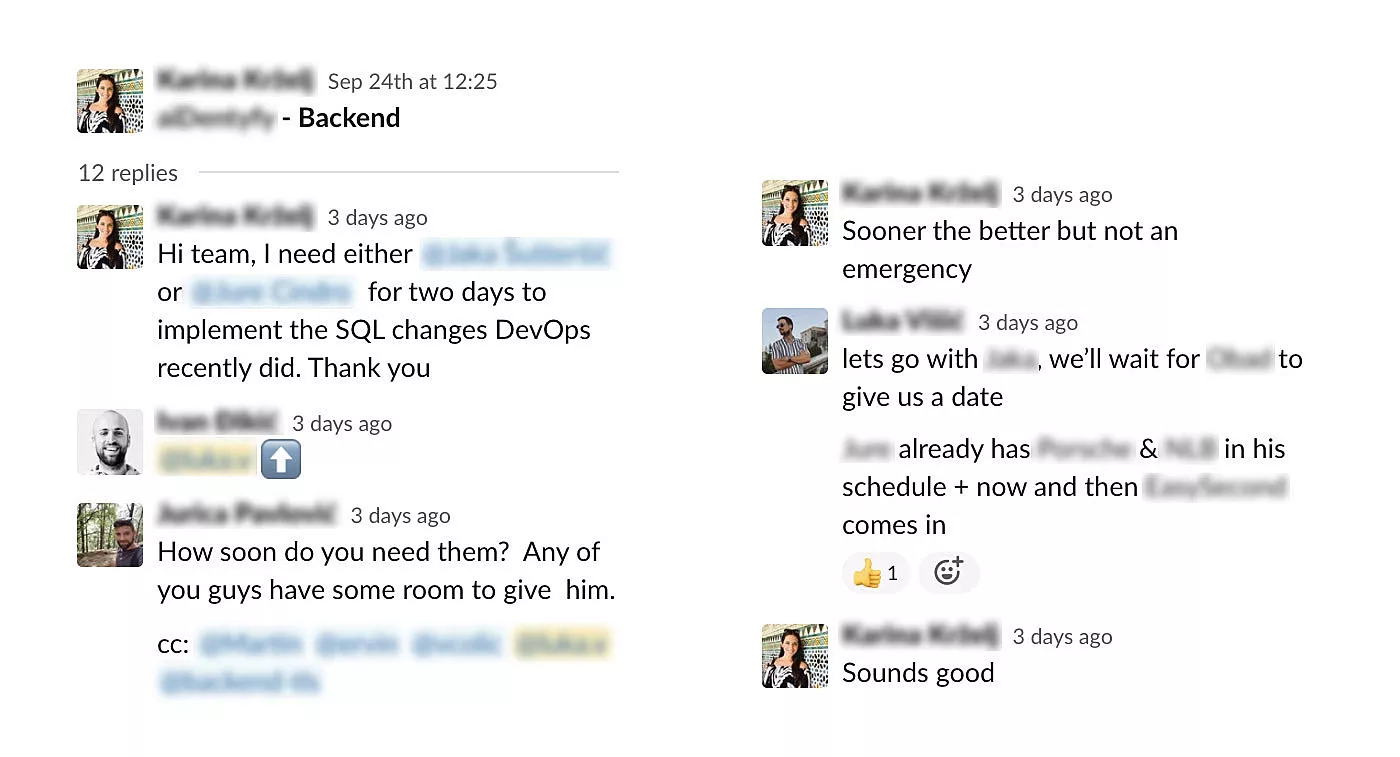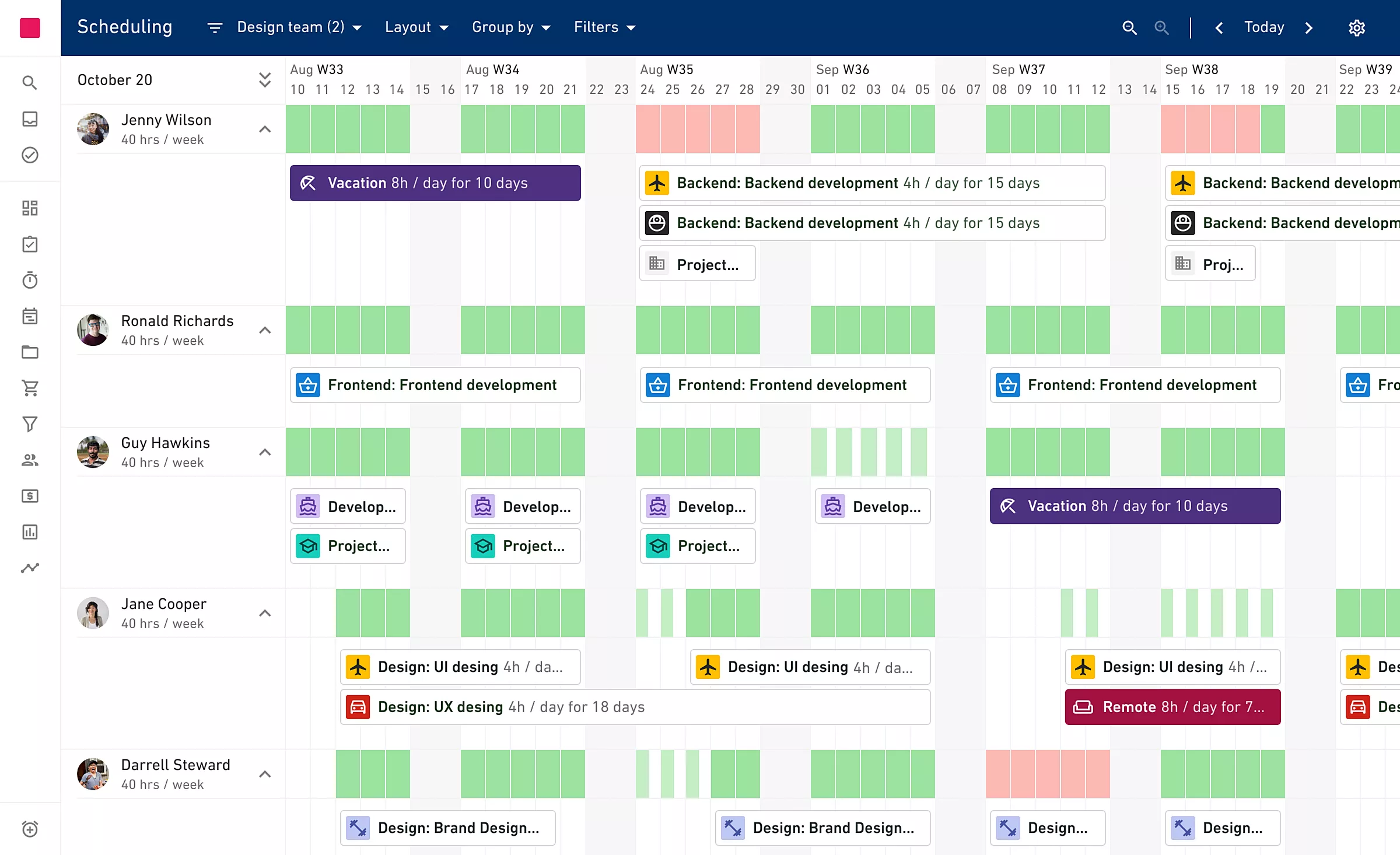Digital agencies rarely talk publicly about how they plan and organize their work, or how they match the production staff with various client projects, also known as high-level resource planning.
Having a sound organizational methodology is one of the pillars of consistent digital product delivery, which ensures our clients accomplish their goals. Yet, many digital agencies consider resource management to be a business secret. We tend to disagree because it’s a significant driver in the value we deliver with our work. So time to unveil it!
Did Soviet Russia get some things right?
The production is what we call a part of the staff that is directly engaged with our clients and delivers the product. In our case, the product means various digital services for which we bill our clients. Our production counts over 200 people in various roles, like Designers, Developers, Product Owners, DevOps engineers, etc.
Having such a strong team of experts in the field makes an excellent foundation for delivering challenging digital products for world-known brands. However, it’s a challenge to plan work for such a large number of people.
About five years ago, we had to choose between self-organizing teams vs. centralized planning. We decided to centralize our planning, as we believe that having a point person manage the production planning comes with many benefits.
If you have a decentralized scenario, your potential problems might include having various departments and Project Managers fight over the same people and waste time by figuring out how to plan work between multiple projects or clients and agree on priorities.
Additionally, in a decentralized scenario, people often have to jump from project to project to put out fires, as their priorities are stretched between multiple projects. This makes the production staff stressed out and less productive, resulting in reduced quality of work delivered on projects.
But before you start planning, it’s important to pick a tool that works for you, as you’ll be looking into potentially huge spreadsheets you’ll have to organize, filter, and analyze to keep track of your production.
We use Productive as our tool for resource planning because it offers key functionalities such as filtering via projects or teams, heat maps for tracking underscheduled or overscheduled people, and shows lead time.
The benefits of centralized resource planning
Having a dedicated person or even a couple of them who manage production planning comes with many benefits for our organization.
Transparent communication
We ensure that the communication around the schedule is made public and decisions come with an explanation so every member of the production shares the same vision. By having dedicated people who oversee the schedule, we’ve reduced the signal-to-noise ratio in communication by a considerable margin.
Painless upscaling
You’ll also have someone who thinks about implementing processes that will enable a painless upscaling of your scheduling needs as your business grows.
The following is an example from Infinum – we have set up a shared Slack channel shared by the Project management team and team leads of various departments. In that channel, people come into agreement about schedule priorities. If there’s a topic on which people can’t agree upon, then the person in charge of the scheduling declares what is a priority.
We had to protect the privacy of our secret agents, but you get the idea.

More efficiency, less overtime
By centralizing our planning, we’ve made the whole scheduling process more efficient. The process is made agile by having weekly scheduling meetings with Project managers and production teams such as the Android or Design team. Centralized planning helps us reduce overtime work, as we are more successful at distributing the workload among people.
Priorities in order
After we have a plan in motion, we track the schedule’s realization and hold accountable anyone who might not follow the plan without discussing it. That, in turn, helps the production staff by knowing their schedule priorities and their focus.
Forecasting insight
Planning and tracking our work provides a perspective on the past and the present of the production workload. Having a detailed schedule makes it possible to forecast our future needs, utilization rates, and revenue, which is valuable for any business.
One role to rule them all
Finally, suppose you have a dedicated role with a complete overview of what’s ahead for your business. In that case, it’s easy to coordinate with HR around hiring priorities and discuss production lead time and new business priorities with the Business Development team.
How centralized scheduling helps deliver value to our clients
While tinkering with our internal processes, our end goal is always to deliver more value to everybody involved while eliminating waste.
In terms of scheduling, the way we plan our work translates to our clients having the best team possible for their needs. If there’s a long-term partnership, sometimes we schedule dedicated teams for extended periods.
Here’s what a typical schedule might look like:

Our production staff always know what the future holds for them, which helps them focus and streamlines delivery.
Long-term partnerships will eventually cause an increase in the lead time of your production resources. This industry term describes the amount of time before a team is available to start working on a project. With every new long-term project, our valuable resources are scheduled for a longer period.
Although some lead time might sound unappealing to new clients, we believe that our lead times are proof of our client’s satisfaction as well as our commitment to having the best teams available for every project.
Transparency is our preferred policy when working with our clients. Even though it might cost us potential work, we are determined to provide realistic estimates and never promise what we cannot deliver in a specific timeline or budget.
Resource planning isn’t an impossible mission
From our experience, centralization and self-organizing teams are the main approaches for successful resource planning. Perhaps you’ll find a solution somewhere in between those two; just make sure the whole process is as agile and transparent as it can be.
Making scheduling decisions public to everybody involved is important because people can understand the context around the schedule decisions and align their expectations with the organization’s goals. Whatever path you take, think about where and how resource management can help your organization.
We believe every organization is doing resource management to some extent, but paraphrasing Dan Ariely: “Resource management is like big data – everyone talks about it, not everyone is sure how to do it, everyone thinks everyone else is doing it, so everyone claims they are doing it.”
We can proudly say that we know how to do resource planning right.







